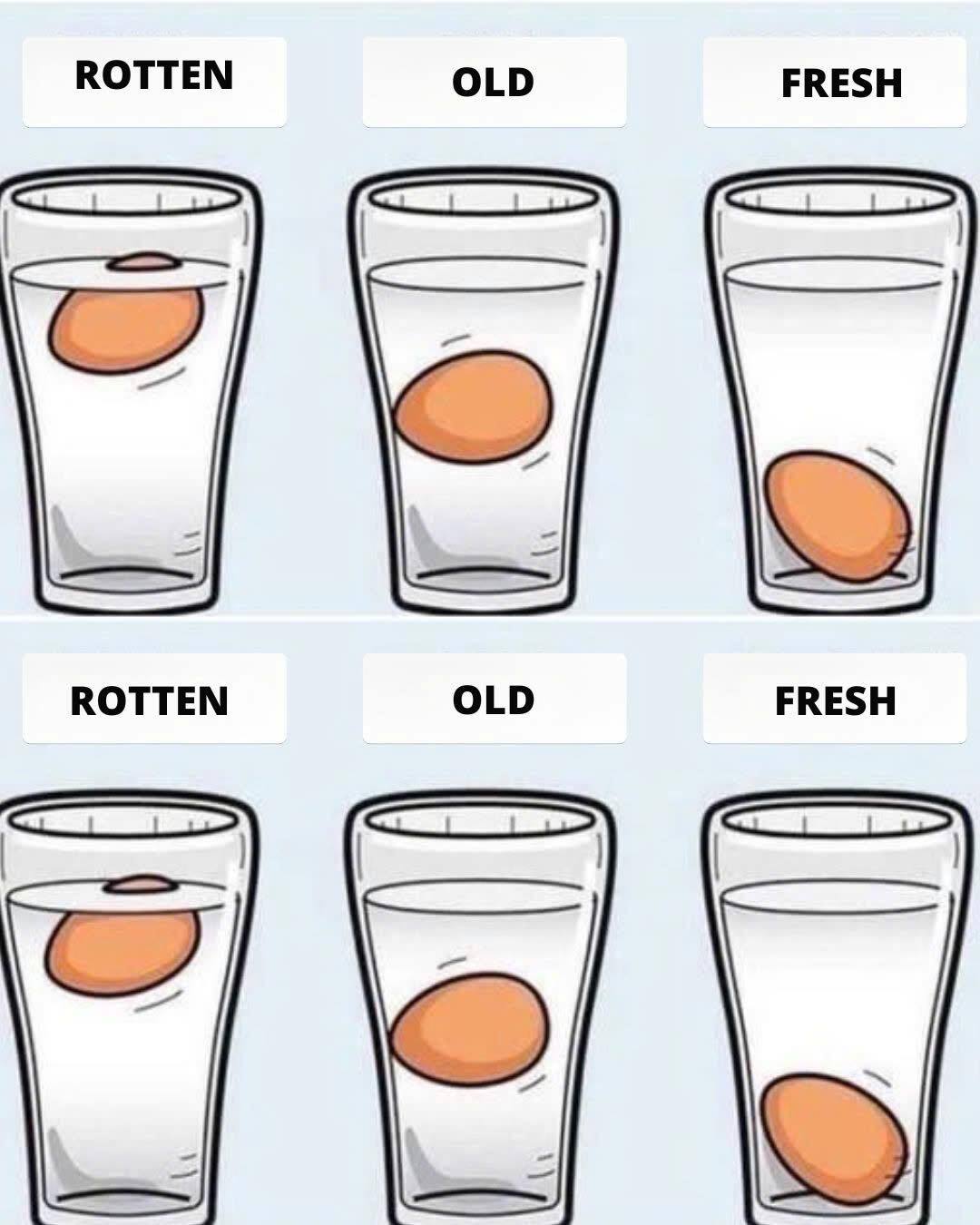Eggs are one of the most common and essential ingredients in the kitchen, showing up in everything from scrambled breakfasts and fluffy omelets to cakes, cookies, and savory casseroles. Because they’re used in so many dishes, it’s important to make sure they’re fresh—not only to preserve the flavor of your food but also to protect your health. A spoiled egg can quickly ruin a recipe and may even cause foodborne illness, which is why knowing how to check egg freshness is a must for any home cook.

Fortunately, there’s a simple and highly effective way to test an egg’s freshness using nothing more than a glass or bowl of cold water. This quick trick takes only a few seconds, doesn’t involve cracking the egg open, and can save you from using an egg that’s past its prime. Here’s how to do it: fill a glass or bowl about three-quarters full with cold water. Carefully lower the egg into the water and watch how it behaves. If the egg floats to the top and stays there, it means the egg is no longer good to eat. This happens because eggshells are porous, and over time, air seeps in while moisture evaporates.
As the air pocket inside the egg grows larger, the egg becomes more buoyant, causing it to float. A floating egg is a clear sign that it should be discarded. If the egg stands on its end or tilts upward while remaining at the bottom, it’s still safe to use, but it’s not as fresh. These older eggs can be used for baking, boiling, or recipes where the freshness of the egg isn’t crucial. Just keep in mind that the texture might not be ideal for dishes that require firm whites or rich yolks.
On the other hand, if the egg sinks to the bottom and lies flat on its side, it’s fresh and perfect for any recipe. This water test is a simple, reliable method that can help you avoid using bad eggs and make the most of the good ones in your fridge. In addition to the water test, there are a few extra steps you can take to ensure your eggs are in good condition. Always inspect the shell before using an egg. The shell should be clean, dry, and uncracked. Cracks in the shell can allow bacteria to enter, raising the risk of contamination. If you notice any slime or odd texture on the outside of the egg, that’s another sign it may be spoiled. If you’re still uncertain about an egg after doing the water test, go ahead and crack it into a separate bowl before using it in your recipe.
A fresh egg will have a firm, rounded yolk and thick, gel-like whites that stay close to the yolk. If the egg appears watery, has a flat yolk, or gives off a strong, unpleasant odor, it’s best to toss it out. A rotten egg typically smells like sulfur, and the scent is unmistakable—if it smells bad, don’t second-guess yourself, just throw it away. Proper storage also plays a key role in keeping your eggs fresh longer. Store your eggs in the refrigerator as soon as you bring them home from the store. The best spot is on a middle shelf, where the temperature is most consistent. Avoid placing eggs in the refrigerator door, as the temperature fluctuates every time the door is opened, which can shorten their shelf life. Also, remember to keep eggs in their original carton to protect them and reduce exposure to strong odors from other foods. If you’ve got eggs that are no longer at their peak but still safe to eat, put them to good use in baked goods. Slightly older eggs are perfect for making cakes, muffins, or quick breads, where texture and flavor are less impacted by age. In fact, many bakers prefer using eggs that are a few days old because they mix and whip more easily. In the end, keeping your eggs fresh and safe to eat is all about being aware and taking a few simple precautions. With the water test and a little bit of common sense, you can make sure the eggs you use in your cooking are not only safe but also delicious.





